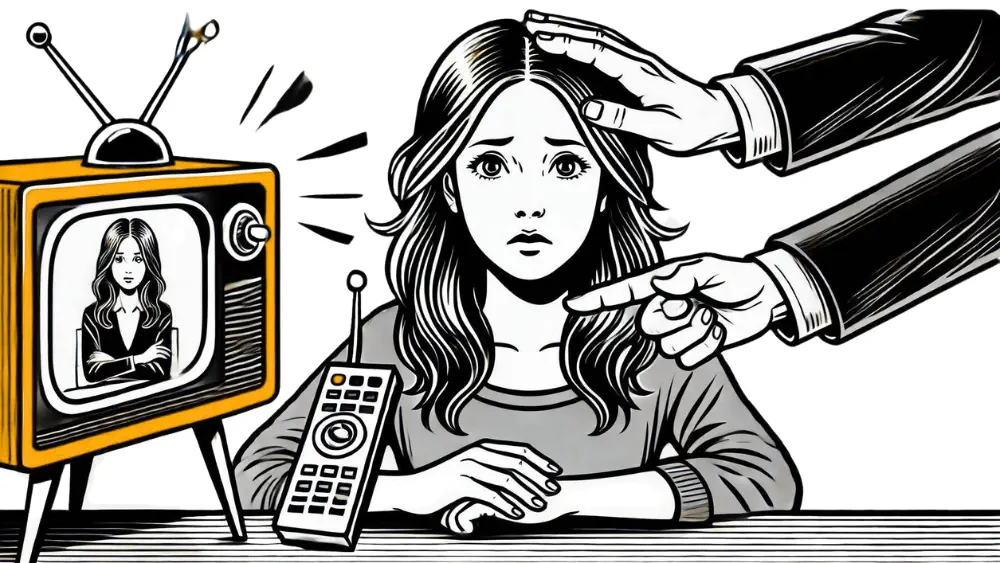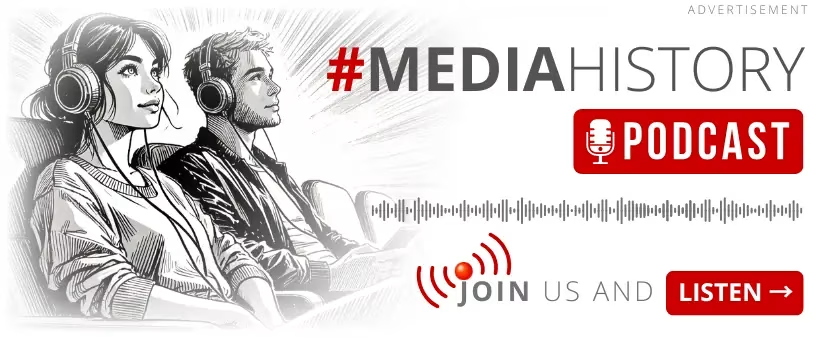 illustration: Bing AI
illustration: Bing AIPublic media play a crucial role in building social trust in information, and their significance in democratic societies cannot be overstated. The latest report from the European Broadcasting Union`s EBU Media Intelligence Service shows that public news services remain the most trusted source of news in Europe.
Trust in Public Media – Numbers Speak for Themselves
The report reveals that in as many as 91% of surveyed media markets in Europe, public media are the most frequently chosen source of information. This is particularly well illustrated by examples from Scandinavian countries: in Finland, 84% of respondents trust Yle, while in Sweden, 75% regard SVT as a reliable source of information. Moreover, even in countries with lower trust in public institutions, such as the Czech Republic or Portugal, public media lead the trust rankings.
Examples from the report:
- 73% of Estonians trust ERR, compared to only 55% trusting commercial media.
- In the UK, 45% of respondents choose the BBC as the most reliable news source, far ahead of its competitors.
- In Poland, public media lag behind – only 13% of young people (aged 15–24) and just 30% of the general population consider them one of the main sources of information.
| Country | Trust in Public Media | Trust in Commercial Media |
|---|---|---|
| Finland | 84 | 65 |
| France | 82 | 73 |
| Netherlands | 80 | 67 |
| Switzerland | 79 | 62 |
| Ireland | 78 | 63 |
| Denmark | 77 | 64 |
| Norway | 76 | 62 |
| Sweden | 75 | 60 |
| Austria | 75 | 60 |
| Estonia | 73 | 55 |
| Lithuania | 73 | 50 |
| Belgium | 68 | 58 |
| Portugal | 66 | 55 |
| Czech Republic | 67 | 54 |
| Germany | 63 | 22 |
| Spain | 46 | 40 |
| UK | 45 | 6 |
| Poland | 30 | 22 |
| Greece | 25 | 36 |
| Hungary | 23 | 35 |
Poles, Hungarians, and Greeks Distrust Media
Low results in Poland, Hungary, and Greece may stem from the perception of public media as dependent on government policies. A common denominator for these countries is the view of public media as politically subordinated institutions. Critics accuse them of bias and lack of pluralism, discouraging audiences from considering them neutral information sources. Additionally, younger generations increasingly turn to digital platforms like social media or YouTube, which better match their needs and lifestyle.
In Hungary, criticism focuses on complete government control, resulting in media messages promoting specific political narratives. In Greece, societal polarization and insufficient funding impact media quality. In Poland, public media face accusations of bias and limited pluralism, particularly alienating younger viewers.
Conclusions for these three countries converge: reforms are necessary to strengthen editorial independence and rebuild social trust. Investments in content addressing diverse audience needs and transparency in media operations could be key.
Public Media and Young Audiences
Although young people increasingly use digital platforms, public media still rank among the top trusted sources in most countries. In Denmark, 57% of young people (aged 15–24) cite public media as one of their top three news sources. An intriguing trend is the growing trust in video platforms like YouTube, particularly compared to traditional commercial broadcasters.
- Public Radio and Television – Remain a main information source, especially in countries with high trust in public media (e.g., Denmark, Finland, Ireland). Around 50% of young people in 14 out of 28 EU countries identify them as key information sources.
- Video Platforms like YouTube – Popular due to short video formats and content by influencers and independent creators.
- Social Media (e.g., Instagram, TikTok, Facebook) – The rising popularity of visual apps like TikTok and Instagram drives young people to obtain information from posts, stories, and videos.
- News Websites and Apps – Youth value independent digital platforms delivering news in a condensed form.
- Podcasts and Audio Content – Gaining popularity for their flexibility (e.g., during commutes).
- Friends, Family, and Discussion Groups – Information obtained through trusted personal recommendations, especially in countries with low trust in traditional media.
Young Europeans increasingly prefer dynamic, easily accessible news sources tailored to their digital communication needs. Public media still play a crucial role in many countries, but their position is threatened by the growing popularity of social and video platforms.
Public Media and Democracy
The EBU report demonstrates that trust in public media correlates with higher citizen satisfaction with democracy. In countries like Denmark, Finland, or Ireland, over 75% of society expresses satisfaction with democratic functioning, aligning with high trust in public media.
- In Finland, where trust in Yle is 84%, 76% of citizens are satisfied with democracy.
- In contrast, in Greece, where trust in public media is just 25%, only 36% of society is satisfied with democracy.
Public media also play a vital role in reducing societal polarization. EBU data indicate that where public media enjoy high trust, societies are less divided. Research in Germany shows that 66% of citizens consider public radio trustworthy, contributing to a higher perception of social cohesion.
- Lower levels of news avoidance: higher trust in public media means fewer citizens deliberately avoid information.
- Better perception of opinion diversity: in countries like Ireland or Sweden, over 80% of respondents are satisfied with media pluralism.
While data highlight public media`s advantage in building trust, the EBU report emphasizes their challenges. Similar to findings in "Reuters Digital News Report 2024," EBU analysts stress that in times of rising disinformation and political pressure, independence and high-quality content remain critical. In countries like Hungary or Poland, where public media are viewed as political tools, reforms to enhance independence are essential.
***
The “Trust in Public Service Media” report by EBU Media Intelligence Service is based on data from Standard Eurobarometer, Flash Eurobarometer Media & News Survey, Reuters Institute Digital News Report, World Values Survey, and RSF World Press Freedom Index. It analyzes trust in public media across Europe and includes findings from local surveys conducted by EBU members and academic literature on media impact on society and democracy. The analysis combines quantitative and qualitative data, with detailed methodologies ensuring transparency and credibility of conclusions. The full report is available for free at:
https://www.ebu.ch/research/membersonly/report/trust-in-public-service-media
COMMERCIAL BREAK
New articles in section Media industry
Advertising market 2025. Poland, Europe and the World
Marcin Grządka
The global advertising market is growing by 8.8% in 2025 and will reach a value of 1.14 trillion dollars. The industry result in Europe records slightly lower dynamics, at the level of 5.8%. In this comparison, Poland performs clearly above the average. We will record an increase of 8.9% this year and a value of 18.56 billion PLN - estimates WPP Media in the annual report "This Year Next Year".
The print media market 2025. Three global trends
Krzysztof Fiedorek
The market value is 359.53 billion dollars, yet the erosion is visible to the naked eye. The decline for newspapers will amount to -2.3 percent. Despite this, print retains strength: it generates 76 percent of subscription revenues and enjoys 82 percent consumer trust. The future of the industry is defined by hybrid strategies and niche specialization.
Journalism in the age of AI. Why people prefer humans over machines
Krzysztof Fiedorek
Only 12% of people accept news created solely by AI, while 62% prefer those written by humans. At the same time, only 19% notice labels indicating the use of artificial intelligence, while younger audiences ask AI to explain the content to them. These are the findings of the Reuters Institute report on artificial intelligence in media.
See articles on a similar topic:
YouTube redefines viewer engagement. Goodbye to returning viewers
KFi
As many as 30% of internet users now turn to YouTube as their main news source, and 65% consume news in video form. Now the platform is shaking things up. Reach still matters, but engagement is what really counts.
Who Reads the Press? Studies on Credibility, Reach, and Effectiveness
Sylwia Markowska
Press for advertising clients is an effective medium for building brand trust, fame, and popularity. According to global studies, it is one of the media with the highest return on advertising. Data collected by Polskie Badania Czytelnictwa (Polish Readership Research) indicates that the press also has exceptionally high ad visibility rates, as reading requires full concentration on content.
Disinformation and Fake News. Experts Discuss Challenges for Journalists
RINF
The pandemic, followed by the war in Ukraine, triggered a massive wave of disinformation in media and social channels. Experts at the Impact’22 Congress in Poznań and the European Economic Congress in Katowice discussed effective strategies to combat disinformation.
Clickbait Uncovered. How Online Headlines Evolved Over 25 Years
Krzysztof Fiedorek
Researchers from the Max Planck Institute analyzed 40 million headlines from the past 25 years. They are getting longer, more emotional, and negative, with a clear influence of clickbait style. Even reputable media use strategies and tricks to grab attention.





























